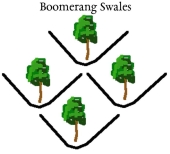
 1
1




Lina
https://catsandcardamom.com
 1
1




 1
1




Lina
https://catsandcardamom.com




Idle dreamer
 1
1




Sometimes the answer is nothing





Iterations are fine, we don't have to be perfect
My 2nd Location:Florida HardinessZone:10 AHS:10 GDD:8500 Rainfall:2in/mth winter, 8in/mth summer, Soil:Sand pH8 Flat








Lina
https://catsandcardamom.com

 1
1




List of Bryant RedHawk's Epic Soil Series Threads We love visitors, that's why we live in a secluded cabin deep in the woods. "Buzzard's Roost (Asnikiye Heca) Farm." Promoting permaculture to save our planet.




Lina
https://catsandcardamom.com
















List of Bryant RedHawk's Epic Soil Series Threads We love visitors, that's why we live in a secluded cabin deep in the woods. "Buzzard's Roost (Asnikiye Heca) Farm." Promoting permaculture to save our planet.

|
Let your freak flag fly. Mine is this tiny ad on my clothes line.
Back the BEL - Invest in the Permaculture Bootcamp
https://permies.com/w/bel-fundraiser
|




